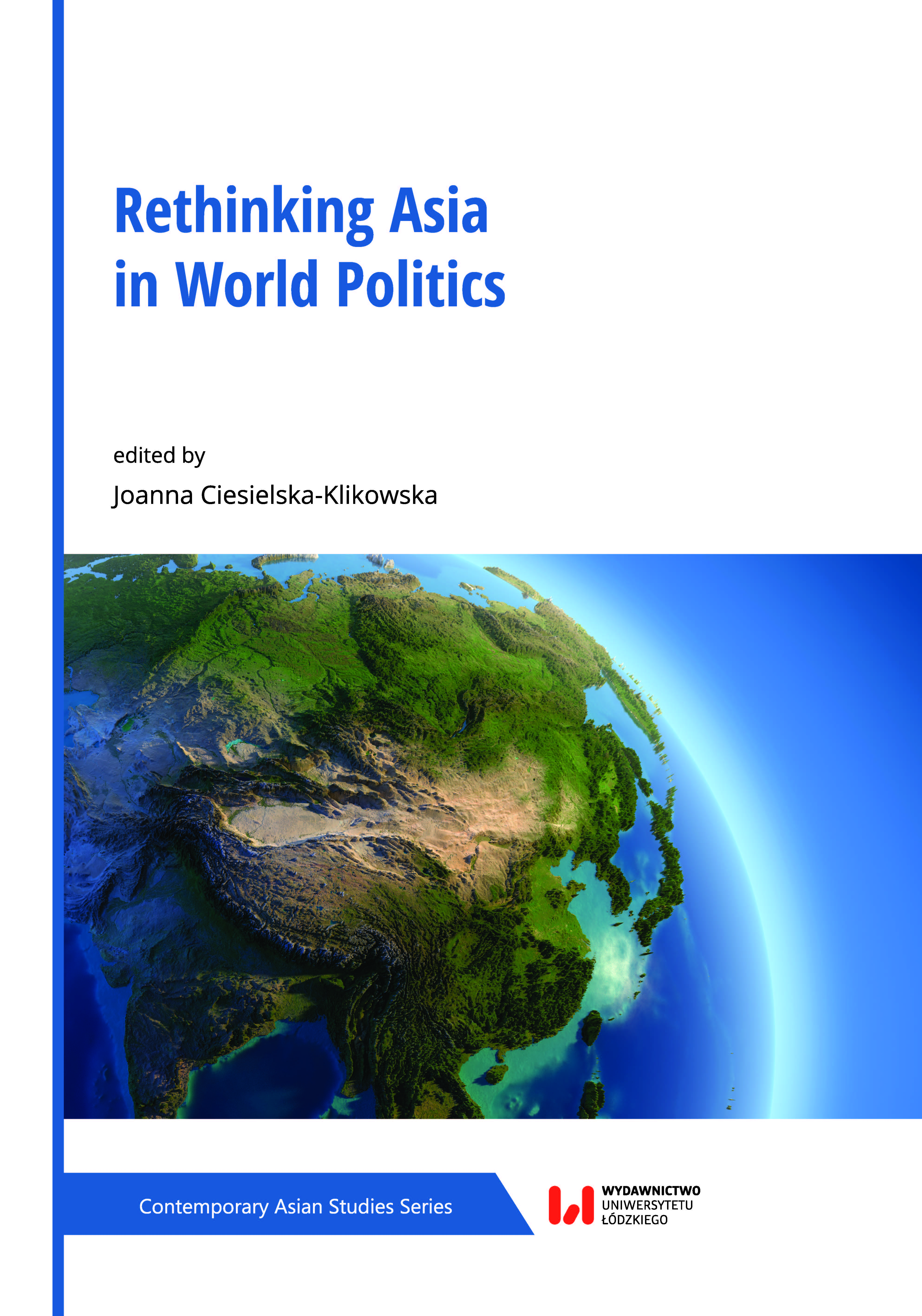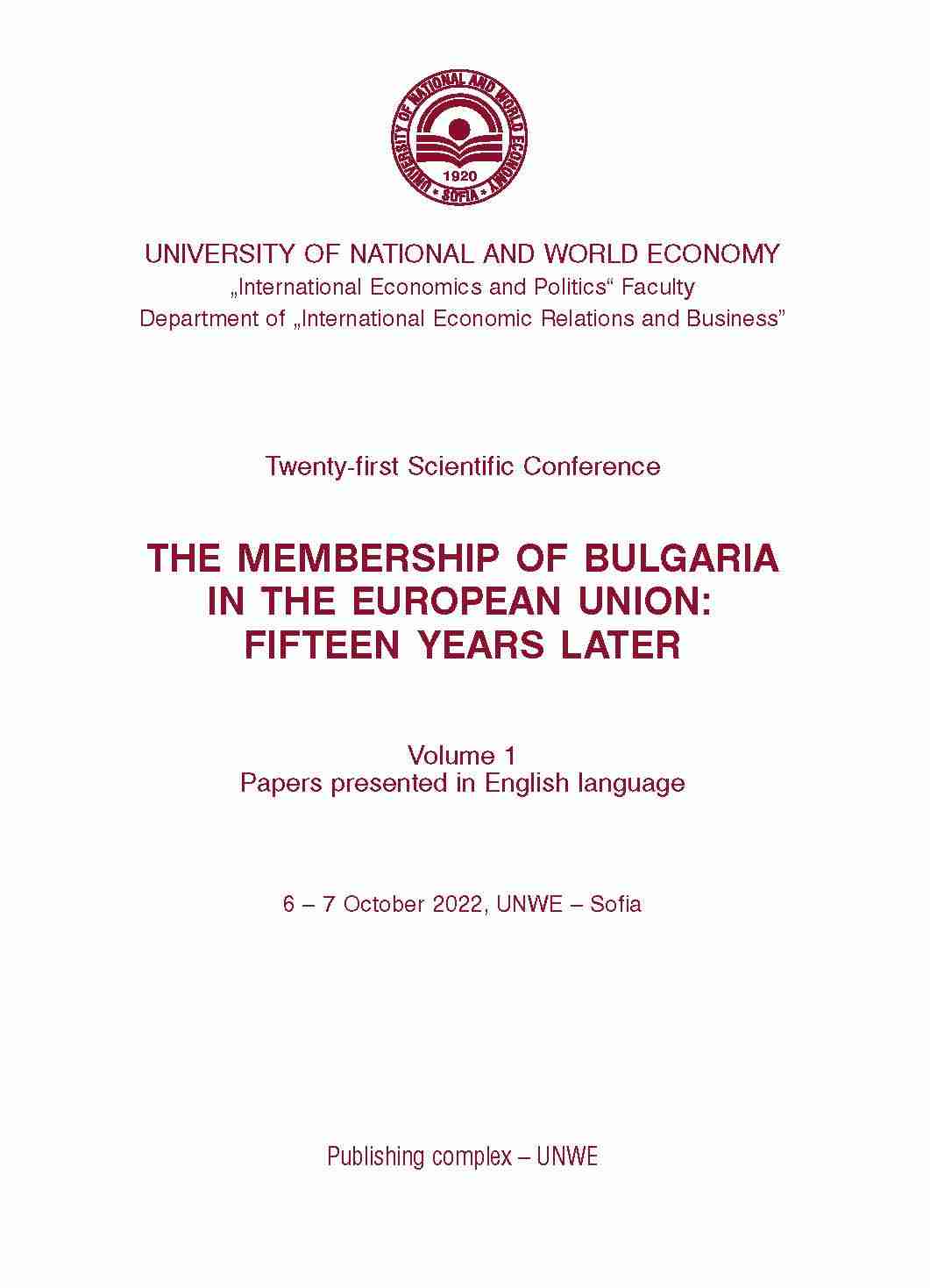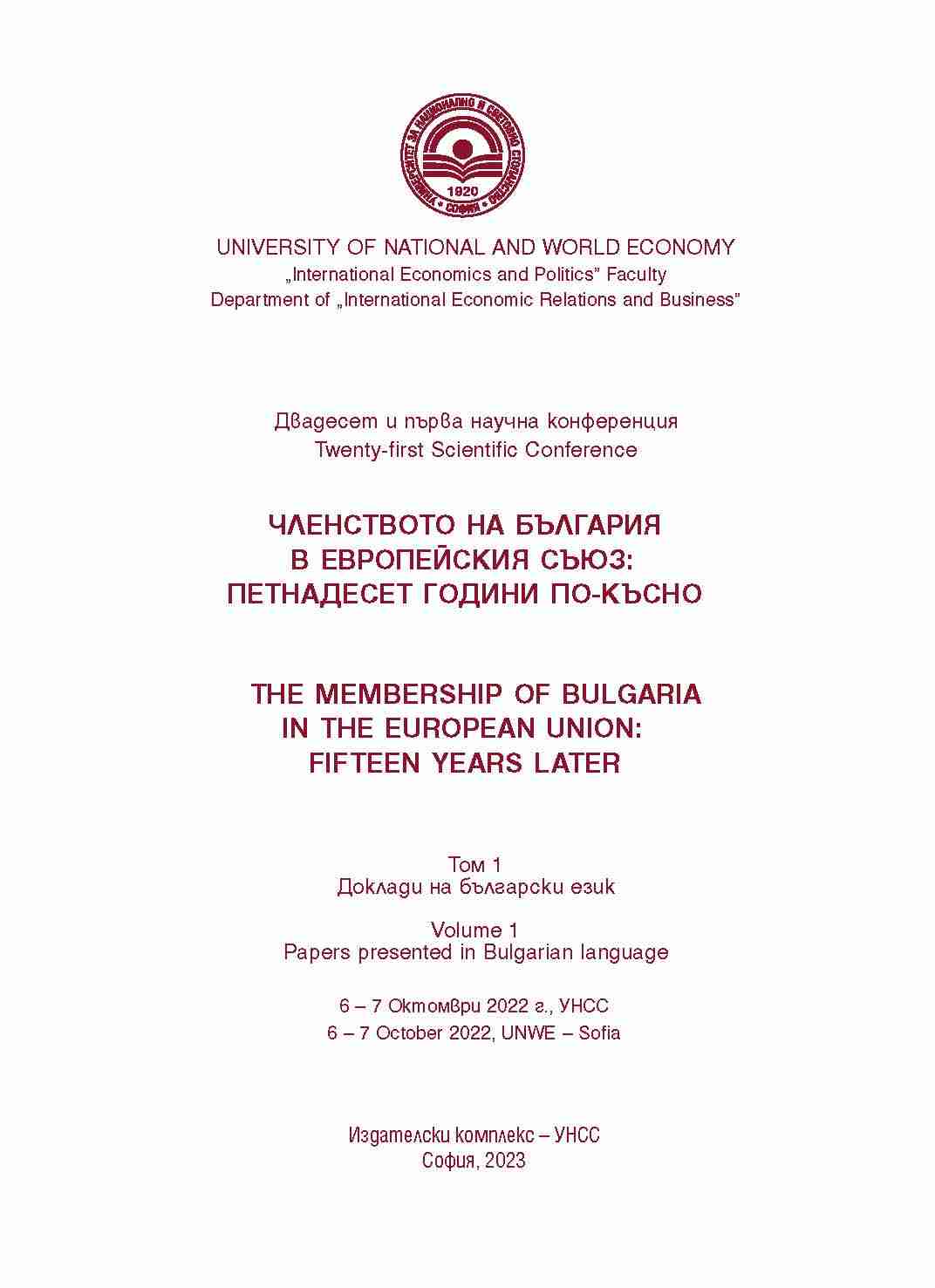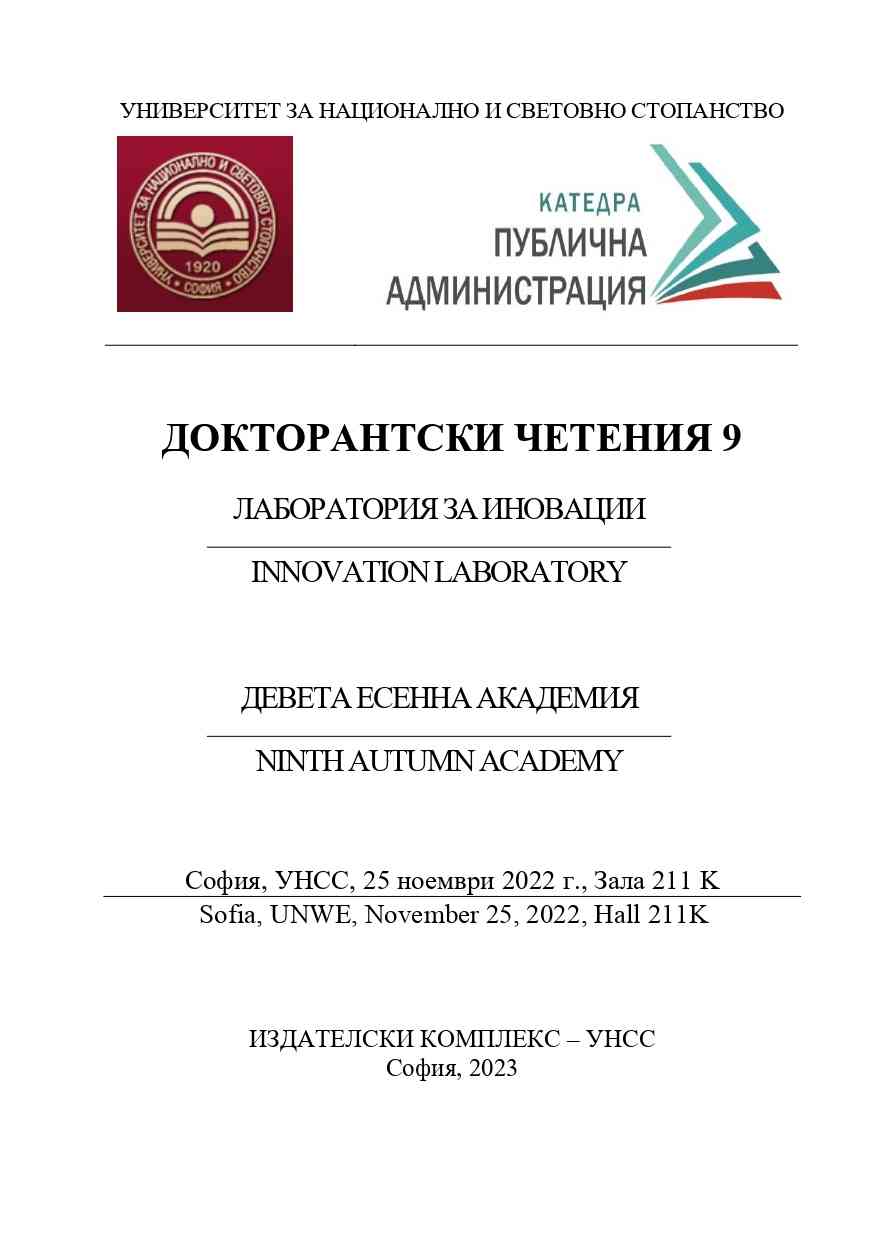
We kindly inform you that, as long as the subject affiliation of our 300.000+ articles is in progress, you might get unsufficient or no results on your third level or second level search. In this case, please broaden your search criteria.


Over the last seventy years the Taiwan Strait has been widely seen as a place where the next major conflict between the great powers could start. The last time when Asia found itself on the brink of war over the future of the island nation was the Taiwan Strait Crisis of 1995–1996. In this article, the author examines the crisis background, events and consequences and suggests that the confrontation marked the emergence of a new status quo in the strait area, the one of a structural deadlock. This paper provides an analysis of the three subsequent periods (2000–2008, 2008–2016 and since 2016 until the present) in the evolution of that status quo. The author argues that in the recent years the situation in the Taiwan Strait has been shifting towards increased turbulence. The study identifies the major factors that are eroding the “pillars” of the status quo and, thus, have a destabilizing effect on the relations between Beijing, Washington and Taipei. As such factors are of a structural nature the author concludes that the room for maneuver for each side of the triangle is becoming increasingly narrow. It enhances the risk of a structural deadlock escalating into an armed conflict.
More...
The following paper addresses the issue of presenting the historical significance of China’s cultural influence in the region of the contemporary Central Asian republics – Kazakhstan, Uzbekistan, Kyrgyzstan, Turkmenistan, and Tajikistan, and in the contemporary Autonomous Region Xinjiang. Using historical texts, the author analyses the place of the Central Asia issue in the thought and strategic plans of successive Chinese authorities. The author points to the importance of building, including metaphorically, the Great Wall and highlights the contemporary importance of developing economic and political relations between China and the countries of the region. The paper emphasizes that the Great Wall did not prevent cultural influences from the north entering China and was a ‘border,’ not a ‘limit,’ in the same way that also the Silk Roads that cut into China’s western borders were channels of intercultural exchange. The text concludes that in the contemporary period, the Central Asian region could and should become a region of intercultural exchange in a constantly changing global order.
More...
Myanmar’s Aung San Suu Kyi remains a puzzle. Not a long time ago a global democracy icon, she now faces harsh criticism for her actions in governance. Much has been written about her policies yet there is little attempt to trace the intellectual sources of her policymaking. This article will try to fill this gap by showing that important sources of Suu Kyi’s governing philosophy can be found in 1950s intellectual climate of Burma. Suu Kyi in her political thought follows the (completely forgotten now) tradition of Burmese Buddhist modernists of 1950s whose most famous representative was U Thant. Suu Kyi is quite like them in many regards including the inability to successfully govern a country.
More...
Proliferation of RTAs in the World Economy as a Consequence of the Crisis within the WTO – the Case of Agreements between the EU and ASEAN CountriesThe ever-expanding and progressive crisis in fulfilling its key roles by the World Trade Organization (WTO) is the main reason behind the proliferation of Regional Trade Agreements (RTAs) all over the world. The growing trend in this regard could also be observed in actions taken by the European Union. The EU’s current policy of diversification and intensification of trade relations involves mainly the conclusion of numerous Free Trade Agreements (FTAs). A clear tendency, in this context, is a special interest in markets of the Asia-Pacific region, owing to their enormous economic potential. Of particular note, in this context, are the bilateral agreements concluded with countries of the ASEAN group, which, as a whole, constitute EU’s third largest trading partner outside Europe. These agreements, leading towards restarting negotiations of the ambitious region-to-region FTA with ASEAN, are particularly significant to reinforcing EU’s position in this economically important area, also, in light of other crucial agreements concluded in the region, such as the Regional Comprehensive Economic Partnership (RCEP) or the Comprehensive and Progressive Agreement for Trans-Pacific Partnership (CPTPP). Ensuring better access to the dynamic ASEAN market is a priority for the EU. This region is critical to European economic interests, which was emphasized in the trade and investment strategy for the EU – “Trade for All,” presented in 2015. In the face of the multilateral crisis within the WTO, the EU, as the most active participant of RTAs in the world economy, will, therefore, concentrate onimplementing its current policy and activities in this regard – negotiating RTAs. This solution, owing to its discriminatory nature, further complicates world trade, however, on the other hand, it grants the EU greater bargaining power. Changing this situation requires reforming the WTO and rebuilding the organization’s position in the world trade system.
More...
Despite the existence of region-wide economic networks and the proliferation of regional cooperation processes in the 1990s and 2000s, East Asia is still one of the under-institutionalized regions in the world. In the absence of a single regional organization covering all regional states, the region is fragmented among regional organizations/groups, most of which geographically overlap due to multi-membership. In the literature on regionalism, this phenomenon has been recently conceptualized as “overlapping regionalism,” which has been observed worldwide. Indeed, East Asia constitutes a special example of overlapping regionalism with its current regional setting because of the high number of overlaps under regional organizations, initiatives, and agreements. Yet, the region has not been extensively examined in the emerging literature on overlapping regionalism. This paper aims to discuss overlapping regionalism in East Asia and its effects. It asks two central questions: why do regional states implement regional initiatives that geographically overlap, and how do overlapping regional initiatives affect regional states’ positions in the current setting of regional architecture in East Asia and vice versa? In order to answer these questions, it first proposes an analytical framework to examine overlapping regionalism. Later, it focuses on selected geographically overlapping free trade agreements like Trans-Pacific Partnership (TPP), Regional Comprehensive Economic Partnership (RCEP), Comprehensive and Progressive Agreement for Trans-Pacific Partnership (CPTPP), and Indo-Pacific Economic Framework (IPEF). It evaluates political and economic factors and determinants of the emergence of these overlapping regional initiatives within the East Asian context. East Asia constitutes a distinctive example in termsof overlapping regional initiatives. It argues that rivalry among the big powers of the region, hedging strategies of middle and small powers, and the looselyinstitutionalized structure of the regional governance are the primary reasons behind their emergence.
More...
An Olympian Spirit is an ideal goal envisioned to bring outstanding athletes in many sports together in objective competition. Historical rules have been strict, some nations have skirted accepted regulations. Then more recently, multiple standards have been relaxed to the point where they seem to be non-existent or mandatory more on some than on others: both nations and athletes. This is para-diplomacy gone wild in the wrong direction. Examples are bountiful: changing of citizenship vicariously, representing countries without citizenship, testing positive for contraband substances then being allowed into competition, denial of a place in competition because the brand on a snowboard is not that of an Olympic “sponsor,” and the list goes on. Olympic training is gruelling. To allow an unqualified athlete to compete deprives a qualified athlete of an opportunity that can be life-changing. Same for fictional disqualification, medal stripping or reduction on pretext technicalities, raiding by some countries of athletes born and trained in other countries. Standards must be uniform, applicable to all competitors, enforced punctiliously by the International Olympic Committee (IOC). Alternatively, right-thinking countries will consider withdrawing from the Olympics. Is the Olympic goal only to make money, to generate media contracts, to pander to sponsors? What sanctions are appropriate? If an athlete wins a medal under a “false flag,” should that award be transferred to her/his real country? When an athlete violates a material rule, should the team of athletes representing that athlete’s country be sanctioned? If fairness is to dominate, what is fair?
More...
The agriculture remains a strategic sector of the economy, despite the widespread decline in its share in GDP production and employment. Its development is observed as a key factor in maintaining food security, as well as reducing poverty. The GMS’s agriculture is characterized by lagging growth rates in comparison with other sectors of the national economy. However, the GMS’s agriculture has shown positive changes. First of all, countries in the region are following a path of intensification, so the yield has increased steadily, although its strong dependence on variable weather conditions is major risk. Much of the agricultural land in the GMS is prone to floods, droughts or both. At the same time, despite the growth in labor productivity, its increase was not significant. The structure of agricultural production has begun to change. Traditionally monoculture production, specializing in rice cultivation, is gradually diversifying into secondary cash crop production, which is helping to increase cash production and agricultural exports. Agriculture in the GMS has been shifting from traditional subsistence to modern commercial farming. Peasant farms are increasingly oriented to the regional and world markets. They begin to produce products with comparative advantages, participating in the regional division of labor. The construction of vertically integrated enterprises and value chains within the framework of the GMS is also taking place. The positive effect of integration processes is the convergence of prices on the regional agricultural market and direct impact on global consumers. This article examines the features and achievements of agriculture, as well as highlights the challenges and problems.
More...
Although anti-Japanese sentiments in Southeast Asia initially remained strong after the Second World War, since the 1970s, Tokyo has managed to establish mutually beneficial cooperation with many Association of Southeast Asian Nations (ASEAN) countries. Cordial relations between Japan and Southeast Asian states contrasted with periodic reemergence of history issues between Japan and China or South Korea. This article examines the causes of this difference. It analyzes the international and domestic factors behind rapprochement between Japan and such states as Singapore, Malaysia, Indonesia, or Vietnam. It is argued that reconciliation with ASEAN countries was a part of Japan’s foreign policy strategy. Initially, it was aimed at promoting mutually beneficial trade through the Fukuda Doctrine, but over time, it started serving as one of the ways of containing and counterbalancing China’s rise in the region.
More...
This paper aims to use game theory to analyze the decision-making process associated with Japanese prime ministers’ visits to the Yasukuni shrine. The central thesis of the research is that it is possible to construct a model that enables the analysis of past visits to the shrine and assess the probability of such visits in the future. The presented research is a case study based on Jun’ichirō Koizumi’s visits during his term as Prime Minister of Japan. The model used for the analysis is based on the ‘chicken dilemma’ and is an example of a non-cooperative and repeated game. Relying on the model also allows us to juxtapose foreign pressures with those exerted by domestic interest groups, as preliminary findings suggest that using game theory to analyze visits to Yasukuni provides a better understanding of the rationality underlying the decisions to visit the shrine. Overall, the research presented here is preliminary and should be continued to deepen the analysis and develop a more accurate model.
More...
Koenkai 後援会 individual support group of Japanese politicians has become phenomenon that has no equivalent in any Western democratic country. It emerged on political scene long before introduction of universal suffrage, have spread in the post-war period of rapid democratization due to electoral campaign constraints, and survived until today despite of major evolutions of political environment. The aim of this paper is to show the historical trajectory of individual support groups development and attempt to answer the question if Koenkai’s funds distribution function-claimed in previous research remains valid. To prove the above I have examined previous research, utilized data of public opinion pools executed by Akarui Suishin Kyokai (Clean Election League) and financial reports submitted by support groups to electoral commissions in each of 47 prefectures and Ministry of Internal Affairs and Communications.
More...
Globally, maternal health matters and birthing ideologies and practices still generate much controversy. On the one hand, those who are promoting the medicalization of childbirth argue that the mortality and morbidity risks justify the imposition of biotechnological standards and practices. On the other hand, activists for demedicalization of birth are denouncing gynecological and obstetric violence, and pointing the pathologies induced by overuse of technologies. These movements, which are part of the current’s feminist calls, advocate a women’s reappropriation over their own bodies. The paper, based on long term and more recent ethnographical investigations aims to explore these political, cultural and social controversies by examining the recent initiatives in reproductive health domain carried by Japanese cooperation in South-East Asia. Since the 2000s, JICA (Japanese agency for international cooperation), as part of its infrastructure development, institutional strengthening and training programs, has indeed carried out numerous initiatives. One aims at improving the quality of maternal health care with two main objectives: the reduction of cesarean section rates and the humanization of birth.
More...
The recent military coup d’état in Myanmar has triggered widespread indignation and concern in the international community. The Tatmadaw have deposed a freely elected government led by the National League for Democracy, interrupting a decade-long process of democratization and repressing the ensuing civil protests with violence. Liberal democracies worldwide issued joint statements of condemnation as well as sanctions targeting the economic interests of the Burmese military. Among them, Japan has been a notable exception in taking significant measures against armed violence. Despite being a democracy pledging to pursue a diplomacy based on freedom, the rule of law and basic human rights, Japan tends to assume passive stances towards violence perpetrated abroad. Drawing from ontological security theory, the article tries to explain this attitude by taking into account Japan’s religious ethos. It is shown that the normative framework underlying Japan’s religious traditions is in stark contrast with the Western, individualistic principles on which humanitarian interventionism is based.
More...
This paper provides an overview of diplomatic missions between Central Europe and Southeast Asia and draws a picture of the political, economic, and cultural interactions between the countries of the two regions on vertical and horizontal levels. Desktop research is combined with selected theoretical views on diplomatic representation and international cooperation. A particular attention is paid to the interaction of the Visegrad Group (V4) countries with the countries of the Association of Southeast Asian Nations (ASEAN). Descriptive empirical views are interpreted in a growing “Indo-Pacific” context. The potential of the V4-ASEAN cooperation format is recognized but not yet fulfilled, which is expected to change with implementation of the EU’s Indo-Pacific Strategy.
More...
This article examines the University of Łódź’s educational cooperation before the outbreak of the COVID-19 pandemic. By analyzing educational and research interactions within the broader framework of Poland-China bilateral relations, both from historical and contemporary perspectives, the author argues that the intensity of contacts between University of Łódź and Chinese counterparts has often been dependent upon fluctuations in the political relations between the two countries and that despite initial enthusiasm the cooperation is now heading on more realistic tracks.
More...

At the beginning of the 21st Century, South-East Asia is gradually becoming one of the major hubs for international tensions and conflict on a global scale. With surge of People Republic of China capabilities connected with Soft and Hard Power, and re-igniting interest of remaining global players, this region is witnessing adaptation of new strategies and tools not only for war, but also for political and economic expansion. The main aim of this paper is to examine development of tools and strategies associated with sea power, which were developed to manage and exploit during standoff and potential conflict in the region. New quality of international environment is introducing change and evolution to the classical concept associated with classical understanding of sea power – how it is produced, measured, and exploited in contemporary situation. Main hypothesis of this paper will state, that with surge in cost and sophistication of sea power platforms, the primary users are devising new avenues to project their influence in disputed areas of South-East Asia. However, its final usefulness still needs to be tested in real-space entanglements. The paper will be subdivided on four separate parts. First will be devoted to original concepts of Sea Power, according to its founders, such as Alfred Thayer Mahan, Julian Corbett and John Fisher, whose created foundations of what is contemporary known as a Sea Power. Second will embrace the specifics of South-East Asia as a particular region for deployment of Sea Power. It will investigate its political, economic, social, and cultural landscapes ant their ties to Sea Power. Third will investigate the potential change in the nature, strategies and tools associated with Sea Power. And fourth part will encompass possible scenarios for Sea Power implementation in the South-East Asia conflict zone.
More...
A comparative analysis is made of the economic dynamics of the EU in relation to the dynamics of the world economy from 1970 until now. Several economic indicators are analyzed – Gross domestic product in dollars at constant 2015 prices, exports and imports in dollars at constant 2015 prices, research and development expenditures as a percentage of GDP, and data on dealing with the coronavirus pandemic 19. The complex situation facing the world and European economies is outlined in relation to the specific moment in which they find themselves – at the bottom of the transition from the first to the second Kondratiev long waves – respectively the risks of a Great Depression and a world war.
More...
The aim of this paper is to investigate some of the results of the application of the SURE instrument of the EU (European instrument for temporary support to mitigate unemployment risk in an emergency) in Bulgaria. The instrument was adopted in May 2020 as a response to the COVID-19 outbreak. The analysis uses the theoretical concept of the so-called “resource curse” which suggests that the abundance of non-tax revenues could result in weakened economic effectiveness while recognizing the mediating role of political decisions for these outcomes. In that regard, the main hypothesis of the study is that the easy access to revenues of a temporary nature through the SURE instrument for financing job retention measures during the COVID-19 pandemics has contributed to occurrence in Bulgaria of some deviations from the good practices in application of similar measures known by the example of other countries. The elements which are particularly affected are the targeting and the timeliness of support.
More...
In the present work, a brief analysis of the legal norms under which political parties qualify for the use of state subsidy has been made. The size, the requirements and the normative regulations governing the administrative framework of subsidizing political parties have been studied chronologically. The current study aims at systematizing the order and specificity of the entire administrative process. The historical reference tracks down both the changes in the cost value of the state subsidy and all the changes that have occurred over the years in relation to the Law on Political Parties as well as the impact on the political and public life. The theses and antitheses with regard to the necessity for state funding for political parties in the country are brought to the fore.
More...